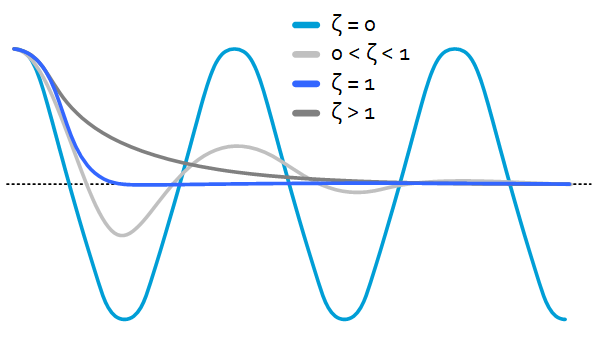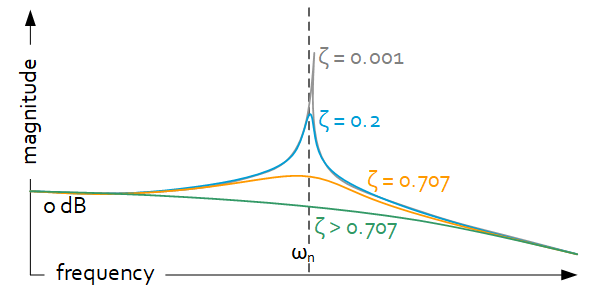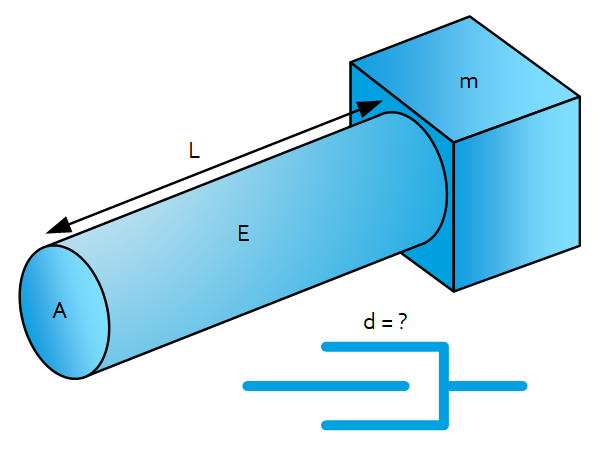Introduction
Each mechanical system from actuator to end-effector comprises damping. This sheet provides some insight how to predict this damping. Damping depends on many factors, such as material, shape, environment, velocity, etc. and therefore it is difficult to predict.
Sub- super- and critical damping
A critically damped system converges as fast as possible without oscillating ($\zeta=1$). Sub-critically damped systems comprise overshoot ($0<\zeta<1$) and super-critically damped systems converge (‘too’) slow ($\zeta>1$). If there is no damping the system keeps oscillating ($\zeta=0$).
Estimation of response in time:

Response in frequency domain:

Damping ratios – qualification
For mechanical systems, the damping is often sub-critical, even when special damping materials are used:
| Qualification | ζ [-] | Amplification A [-] |
|---|---|---|
| Low | < 0.05 | > 20 dB |
| Moderate | 0.05 - 0.1 | 14-20 dB |
| Good | 0.1 - 0.2 | 8-14 dB |
| High | > 0.2 | < 8 dB |
Example: damping of a suspension rod
Let’s assume a cylindrical aluminum rod which is used to suspend a mass m in the direction of its axis. The axial stiffness (direction of use) is $c=EA/L$. The rod is used in its elastic range so the damping ratio is about $\zeta=0.01$ (or even lower).

Then, the physical damping coefficient of the system equals: $d=2\zeta\sqrt{cm}$
Damping ratios – quantification
| System | ζ [-] |
|---|---|
| Helical springs | ≈ 0 |
| Metals in elastic deformation range | < 0.01 |
| Granite | > 0.01 |
| Continuous metal structures | 0.02 - 0.04 |
| Metal structures with joints | 0.03 - 0.07 |
| Plastics: hard - soft | 0.02 - 0.05 |
| Rubbers | 0.05 |
| Sintered material (piezos) | 0.05 |
| Glue | > 0.05 |
| Damping materials | > 0.05 |
| Airpots (vibration isolation tables) | 0.07 |
| Elastomers | 0.1-0.15 |
| NBR Nitrile Rubbers | 0.1 |
| Glass fiber pads | 0.1-0.2 |
Damping influences
| System | ζ* |
|---|---|
| Vacuum | - |
| Cryo | |
| Material impurities | + |
| Joints | + |
| Increasing frequency | - |
| Increasing temperature | |
| Thin air gap | + |
| Eddy currents (nearby) | + |
| * increase of damping: + / decrease of damping: - | |
